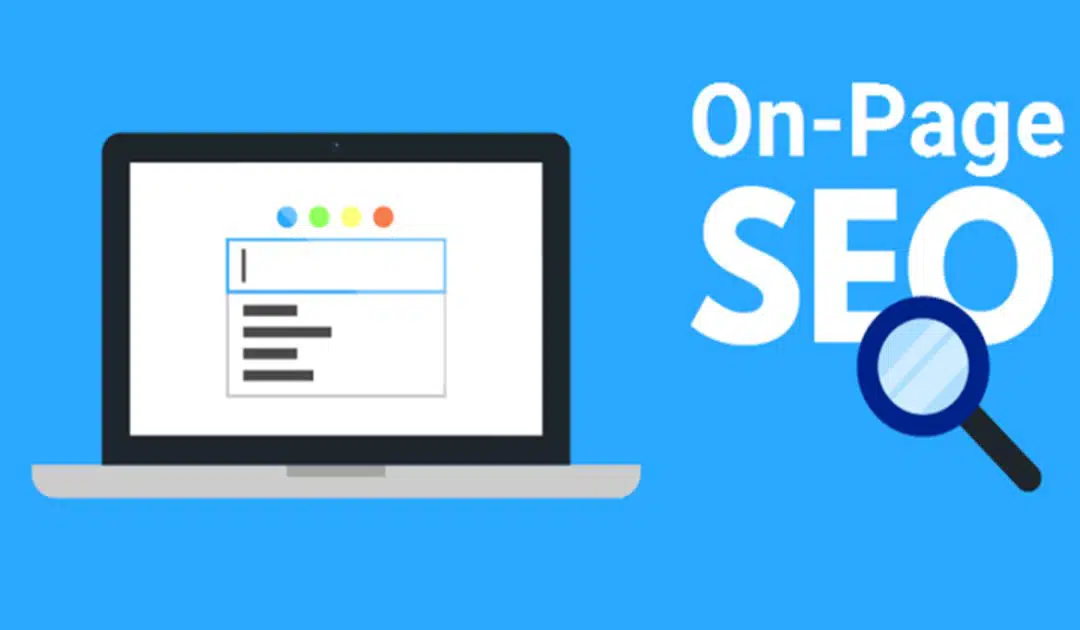There are several aspects to consider when it comes to on page SEO. For starters, you should make sure to include Meta data on your website. It is imperative to use the right keywords. Other important factors include Internal linking and Keyword research. In addition, your website should have a Sitemap. You can also create a page for your product or service. But be sure to avoid keyword stuffing on your homepage and other pages. Keyword stuffing can have negative effects on your website’s SEO and may make your site feel spammy to your visitors.
Meta data
When using meta data for on page SEO, make sure to keep two things in mind. The first is that the title is meant for the search engine, and the second is that the description is written for your website’s audience. While meta descriptions should help Google understand what your page is about, your meta title is meant to capture the attention of visitors. Ensure that your meta descriptions don’t sound spammy, and that they are as unique as possible.
Meta descriptions are also important, but they shouldn’t include every keyword. Instead, they should reflect the overall content of your page, and the keywords in the meta description. A bit of research can help you determine what works and what doesn’t. For example, you might find that some keywords are more useful than others. In that case, try using keywords that are related to the page’s content. It is also best to avoid having too many meta descriptions.
Lastly, you should include the focus keyword in your meta title and meta description. Google will use these keywords to highlight your content in search results. Remember that your meta description should make your content easy to read. This is especially true for long-tail keywords. Adding a brand name or a catchy construction to your title can help you rank better for these terms. Adding the year and keyword to your meta description can also improve your site’s search engine visibility.
Internal linking
Creating an internal linking structure is a great way to pass link authority from one page to another, improving rankings. These links are determined by Google’s PageRank algorithm, which measures the authority, quality, and relevance of each individual page. By using strategically placed internal links, you can achieve your goals. In addition to increasing your site’s authority, internal links can also generate additional traffic to your website. But do internal links really work?
To improve internal linking, choose anchor text that matches the topic of the targeted pages. Anchor text is a great way to indicate topical relevance and the contextual relationship between the two pages. Internal links with the correct anchor text can have a positive impact on customer journeys. When choosing the right anchor text for your links, make sure it’s descriptive and relates to the content of the target page. And be sure to use the correct anchor text – both in the target page and the link itself – as well as using relevant keywords.
Use the SEO spider to detect broken internal links within your domain. Website Auditor is another great tool to check for broken links. If you use a link to a page that is 404 Not Found, you can filter the results with an HTTP Status code, a common broken page response. When the 404 response code appears, the page is a broken link. Instead of sending users to a dead end, you should redirect them to a relevant page.
Keyword research
The first step in doing on page SEO is to understand what your target market is searching for. To do this, you should enter your targeted keyword into a search engine and look at the results. Likewise, you should research related search terms, as they can lead to traffic to your site. After you have a general idea of the type of people looking for your services, you can start creating content that matches their interests.
After identifying your target audience, you need to know what they search for. Keyword research will help you determine what topics they are searching for. By researching popular topics, you can choose which keywords to target. This will help you make content around those topics and improve your overall ranking potential. Keyword research involves three major components: researching keywords, researching competition, and determining topic relevance. Once you understand these elements, keyword research will be a breeze!
A good keyword tool will suggest phrases based on your keyword idea. The tool will also suggest phrases based on how people search for your topic. Depending on your niche, you can even use keyword research to brainstorm blog topics. Although the demand for this topic may not be huge, any visibility in search can make a huge difference in performance. So make sure to do your keyword research carefully and use this information to improve your content.
Sitemaps
If you have a website, you need to use Sitemaps to ensure that search engine spiders can crawl your site. Although they won’t greatly increase on page SEO, they’re important for several reasons. First of all, they make it easier for search engines to understand the structure of your website. Sitemaps should also contain all pages you want indexing, including new pages, because older content won’t get indexed as quickly and won’t rank as well.
If you’re unsure about the benefits of sitemaps, read on. Sitemaps are XML files that list all URLs on your website. Including them on your site makes it easier for search engines to follow the links on your website. However, be sure to keep the number of sitemaps to a minimum, as too many URLs can lead to penalties. If you’re unsure of whether sitemaps are worth the trouble, there are many free online tools that can help you with this.
A sitemap file is a structured list of your website’s subordinate pages. This makes the indexing process more efficient, and it also tells search engines which pages are important. The sitemap also tells search engines about any alternate language versions of pages. You can use different sitemap entries for different categories, such as video, images, and news. A news entry, for example, might have the title and publication date of an article.
Relevance
When determining the relevance of on-page SEO, you must consider searcher intent. The searcher’s intention will determine the content of search results, and your content must meet their expectations. Relevancy in SEO is essential for website success. In order to satisfy searcher intent, you must consider the context and word choices in your content. It is important to know how to distinguish between semantic and literal relevance, as well as the different types of on-page SEO.
Another important optimization point is the page’s title and meta description. In Google’s algorithms, a page’s title and meta description are essential to search results. This element offers a brief description of the page, and is often displayed underneath the page’s title. If your title is “Daily Dog Breeds,” it is likely that your content will be the same. Your meta description can boost your rankings by incorporating your keyword into the title.
In addition to optimizing the content and settings of the page, on page SEO may also be done through campaigns and social media marketing. One example of this is adding Instagram posts to your Content Marketing strategy. In addition to improving the brand image of your website, these posts can generate significant traffic. The goal of this method is to ensure that your web page is a valuable resource to your potential customers. So, start implementing on-page SEO strategies today!
URL structure
There are two main rules for URL structure to maximize on page SEO. The first rule is to avoid using stop words. These words add nothing to your URL and should be removed. Secondly, it is important to use proper punctuation to make your URLs easy to read. If you’re using stop words, consider adding hyphens or spaces. Using underscores instead of full stops can also make your URLs more readable.
Another important rule to keep in mind when creating your URL is to avoid using dynamic hyphens. Dynamic URLs can cause issues, especially for eCommerce sites. Besides that, dynamic URLs don’t make for the most effective URL structure. Here’s how to avoid these issues. Use your URL structure to your advantage and rank higher in search engines! So, start creating a URL structure today! You’ll be glad you did!
A link is an internet address that can be clicked. The URL contains a link, which triggers the internet browser to visit a URL. Links help link pages to each other. They can be internal referrers on your website or a link to another website. Using fragments is also beneficial for a website’s SEO. In addition, it is also good for human-readable URLs. A URL structure that includes relevant keywords makes it easier for search engines to index and retrieve your website.


Recent Comments